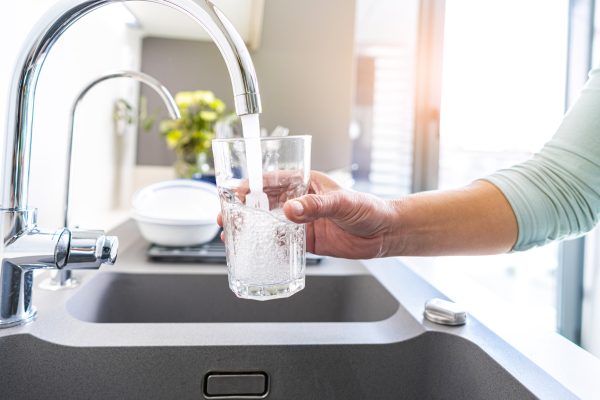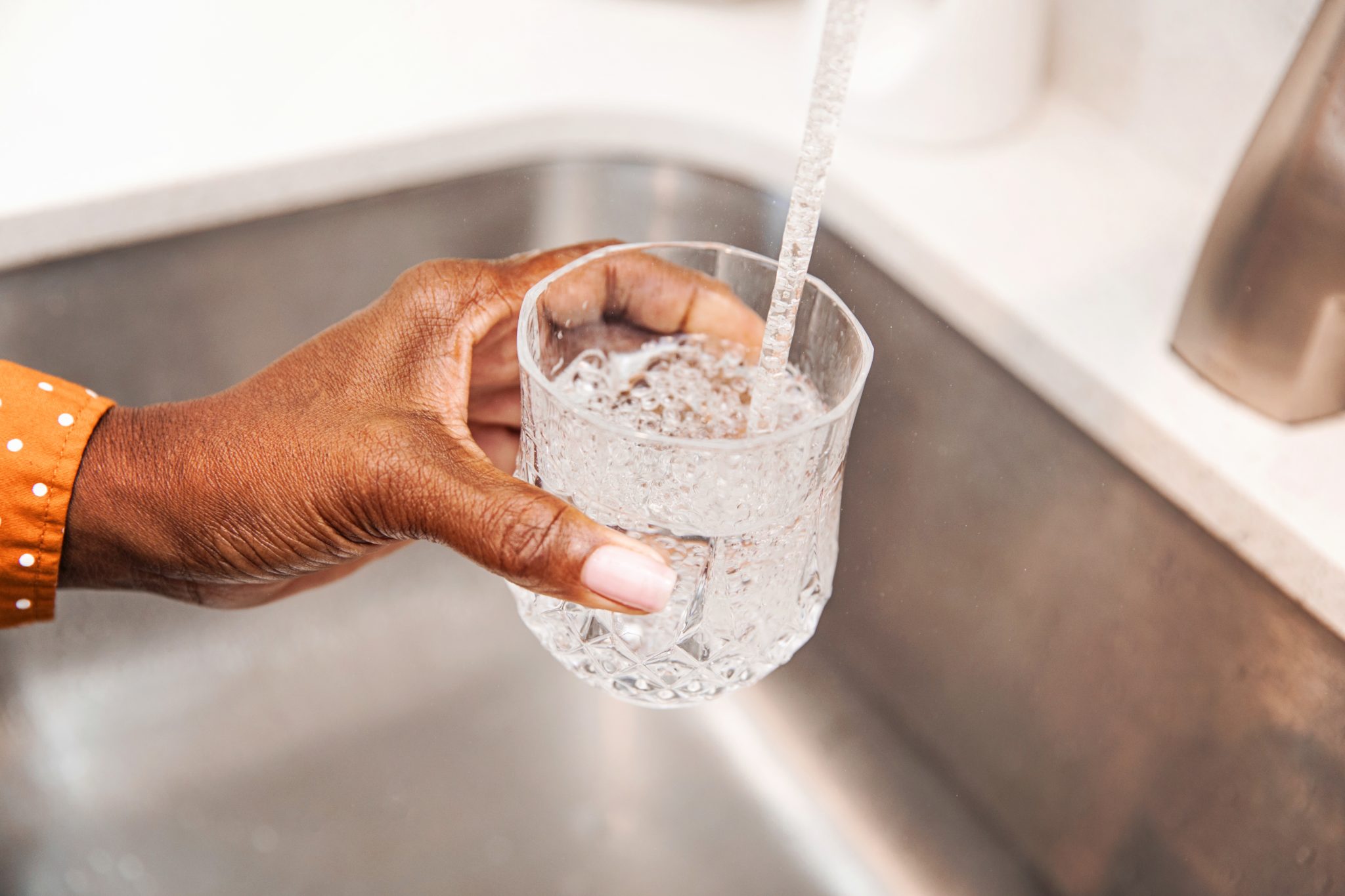Fish & Water

Well Water Background
Thousands of Alabama residents rely on private water systems for their drinking water source. The 2015 Water Use Report published by the Alabama Office of Water Resources reported 11 percent of the population relied on private wells for their drinking water. With well ownership comes a specific set of responsibilities, that includes the maintenance, testing, and treatment of their own water system. Wells can become contaminated through improper construction, maintenance, or poor stewardship practices around the well. Carefully monitoring and keeping a detailed record of the well can help in preventing future problems from occurring, while annual testing can help assure safe drinking water quality for the household utilizing a private well system as their primary drinking water source.
About the Handbook
This handbook introduces the reader to important topics regarding owning a domestic water well in the state of Alabama. Important information covered include geology and groundwater of Alabama, common water contaminants, well water testing and treatment, and general well maintenance. This handbook empowers Alabama Extension Agents, Agency Partners, and citizens to advocate for the stewardship of private water wells and preserve, protect, and enhance this vital resource.
This handbook was created as part of the Alabama Private Well Program, an educational program developed by the Alabama Cooperative Extension System. For more information, contact alwells@auburn.edu
Content
Introduction
- Well Water Background
- About the Handbook
- About the Alabama Private Well Program
Chapter 1: Aquifers in Alabama
- The Water Cycle
- How Aquifers Form
- How Groundwater Relates to You
- How Aquifers Recharge
- Hydrogeologic Provinces of Alabama
 Chapter 2: Considerations for Owning a Well
Chapter 2: Considerations for Owning a Well
- Types of Wells
- How Wells Work
- Benefits and Considerations for Owning a Well
- Information About Your Well
- Managing and Maintaining Wells
- Constructing a Well
- Conducting Visual Inspections
- Backflow Prevention
- Regular Water Testing
- Checklist for Private Well Owners
Chapter 3: Well Yield and Water Rights in Alabama
- Understanding Problems with Well Yield
- Water Rights in Alabama
Chapter 4: Water Quality
- Drinking Water Guidelines and Standards
- Common Well Contaminants
Chapter 5: Testing Well Water
- Why Well Water Testing Is Important
- Well Water Testing Schedule
- Well Water Testing Process
- Choosing a Laboratory
- How to Sample Well Water
- How to Interpret Test Results
- What to Do After You Test
- Responsible Well Owner Checklist
Chapter 6: Well Treatment Options
- Determining Which Treatment to Use
- Treatment Options
- Reverse Osmosis
- Distillation
- Aeration/Deaeration
- Disinfection
- Emergency Disinfection
- After You Treat
 Chapter 7: Protecting Your Well
Chapter 7: Protecting Your Well
- Selecting a Well Location
- Properly Constructing a Well
- Properly Storing Chemical Contaminants
- Preventing Backflow
- Testing Your Well Water
- Sealing Unused Wells
Appendix & Additional Resources
- Geological Survey of Alabama Goundwater Circulars
- Table A.1. Water Wells and Groundwater Information Websites
- National Primary Drinking Water (E&A) Regulations
- Table A.2. Contaminants and MCL, SMCL, and Potential Treatment Options
- Additional Resources
- Table A.3. Treatment Devices
- References
Download a PDF of Owning a Private Well in Alabama, ANR-2782.
For questions about accessibility or to request accommodations, contact Extension Communications and Marketing at 334-844-5696 or extcomm@aces.edu.

 Jessica Curl, Extension Water Program Project Coordinator; Laura Bell, Extension Water Program Project Coordinator; Caitlin Sweeney, Extension Water Program Assistant; and Eve Brantley, Extension Water Resource Specialist, Director, Auburn University Water Resources Center
Jessica Curl, Extension Water Program Project Coordinator; Laura Bell, Extension Water Program Project Coordinator; Caitlin Sweeney, Extension Water Program Assistant; and Eve Brantley, Extension Water Resource Specialist, Director, Auburn University Water Resources Center
New October 2022, Owning a Private Well in Alabama, ANR-2782
The authors would like to thank the following groups and individuals for their assistance:
Greg Guthrie, Director, Groundwater Assessment Program, Geological Survey of Alabama; Ann Ojeda, Assistant Professor, Geosciences, Auburn University; Camila Rodrigues, Assistant Extension Professor, Horticulture, Auburn University; Mark Barnett, Professor, Civil and Environmental Engineering, Auburn University; Gary Hawkins, Assistant Professor, Water Resource Management, University of Georgia; Jason Barrett, Associate Extension Professor, Water Resources Research Institute, Mississippi State University; Diane Boellstorff, Associate Professor, Extension Water Resource Specialist, Texas A&M University; Joel Pigg, Extension Program Specialist, Texas A&M University; and Anne Baird, Program Director, Ohio Certified Volunteer Naturalists, Ohio State University
Special thanks to the following for their support of this new program:
Mike Clardy, Director, Communications, Strategic Marketing, and Client Relations, Alabama Cooperative Extension System, Auburn University; Bruce Dupree, Manager, Communications and Marketing, Alabama Cooperative Extension System, Auburn University; Glenda Freeman, Communications Editor, Alabama Cooperative Extension System, Auburn University; Janet Guynn, Media Production Specialist, Alabama Cooperative Extension System, Auburn University; Aimee Lewis, Manager, Communications and Marketing, Alabama Cooperative Extension System, Auburn University; Kristin Garrett, former TES Designer, Communications and Marketing, Alabama Cooperative Extension System, Auburn University; Bethany McGuckin, Student Designer, Communications and Marketing, Alabama Cooperative Extension System, Auburn University; Mike Phillips, Director, Alabama Cooperative Extension System; Paul Brown, Associate Director, Alabama Cooperative Extension System; Emery Tschetter, Communications and Marketing Specialist, Alabama Cooperative Extension System; and Gary Lemme, former Director, Alabama Cooperative Extension System

